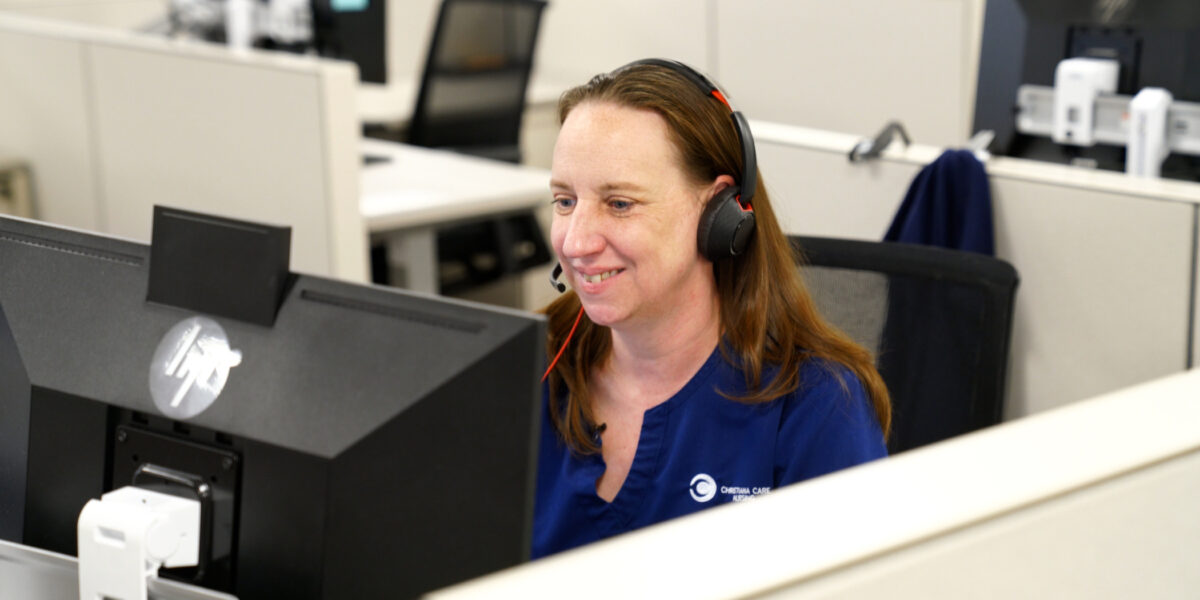At ChristianaCare, our patients are our number one priority. That perspective keeps us thinking about new ways to deliver care, including those that allow our caregivers to put their knowledge, skills and focus to the best use.
As a Magnet® organization, ChristianaCare drives innovation in nursing practice. Read more.
Virtual acute care nursing is one way we are making sure our caregivers are working at the highest levels to care for our patients in our hospitals.
What is virtual nursing?
This program allows experienced nurses to practice virtually in another location. Nurses working virtually help nurses at the bedside by documenting health information, such as medication histories; providing patient education; monitoring patient lab work; completing patient admission documentation; and helping with discharge planning and care coordination.
By working virtually, these nurses help remove some of the documentation burden for our clinical staff while also improving our patient outcomes.
For example, a virtual acute care nurse can take the time to explain to a patient what their at-home care plan will look like, when to take their medications or even understand more about their condition. That allows our bedside nurses to keep their focus on the immediate needs of their patients.
How does virtual nursing work?
If a patient has a question about their medicine or wants to know more about their impending discharge, they can use a computer tablet that’s placed next to their bed to contact their virtual nurse, who will answer the call.
Patients want to feel that someone is available to talk with them, and that’s exactly what our virtual nurse program provides. While our bedside nurses work on a unit caring for multiple patients, our virtual nurses care for one patient at a time without distraction.
How is ChristianaCare using virtual nursing?
We are currently using a virtual nursing care delivery model in more than 500 of our acute care beds – that’s about 41% of all the beds we have in Wilmington and Christiana hospitals.
Nearly 19,000 patients have received this kind of innovative care at ChristianaCare. Our patients and nurses have been involved in over 53,000 calls, spending between seven and nine minutes each time they talk.
Since starting, we have seen decreases in patient length of stay and readmission rates. For us, these improvements in patient care – along with our patient experience scores – show us the value of the program.
Why does this matter?
It’s no secret that nurses have been overburdened with high patient volumes and labor shortages that have affected the entire health care industry. Given this, it’s imperative to think of new models to support our caregivers, ease their workload and make sure we are providing expert care.
Improvements in patient care – along with our patient experience scores – show us the value of the program.
Virtual nursing allows us to do that.
There also are other advantages to virtual nursing. It can be an option for skilled nurses who aren’t able to handle the physical demands of the job since the interaction with patients is through a tablet.
Virtual nursing also offers an opportunity to help early-career nurses learn from experienced caregivers. A virtual nurse can provide mentoring to the bedside nurse by acting as an extra set of eyes and ears to help assess a patient or talk through a challenge. This approach can also help retain more of our early-career nurses, which is good news for all of us.
We see virtual nursing as another tool to help our caregivers serve with love and excellence. And let’s be honest — we all want good care to be as easy as pushing a button.
Thanks to virtual nursing, it is.



